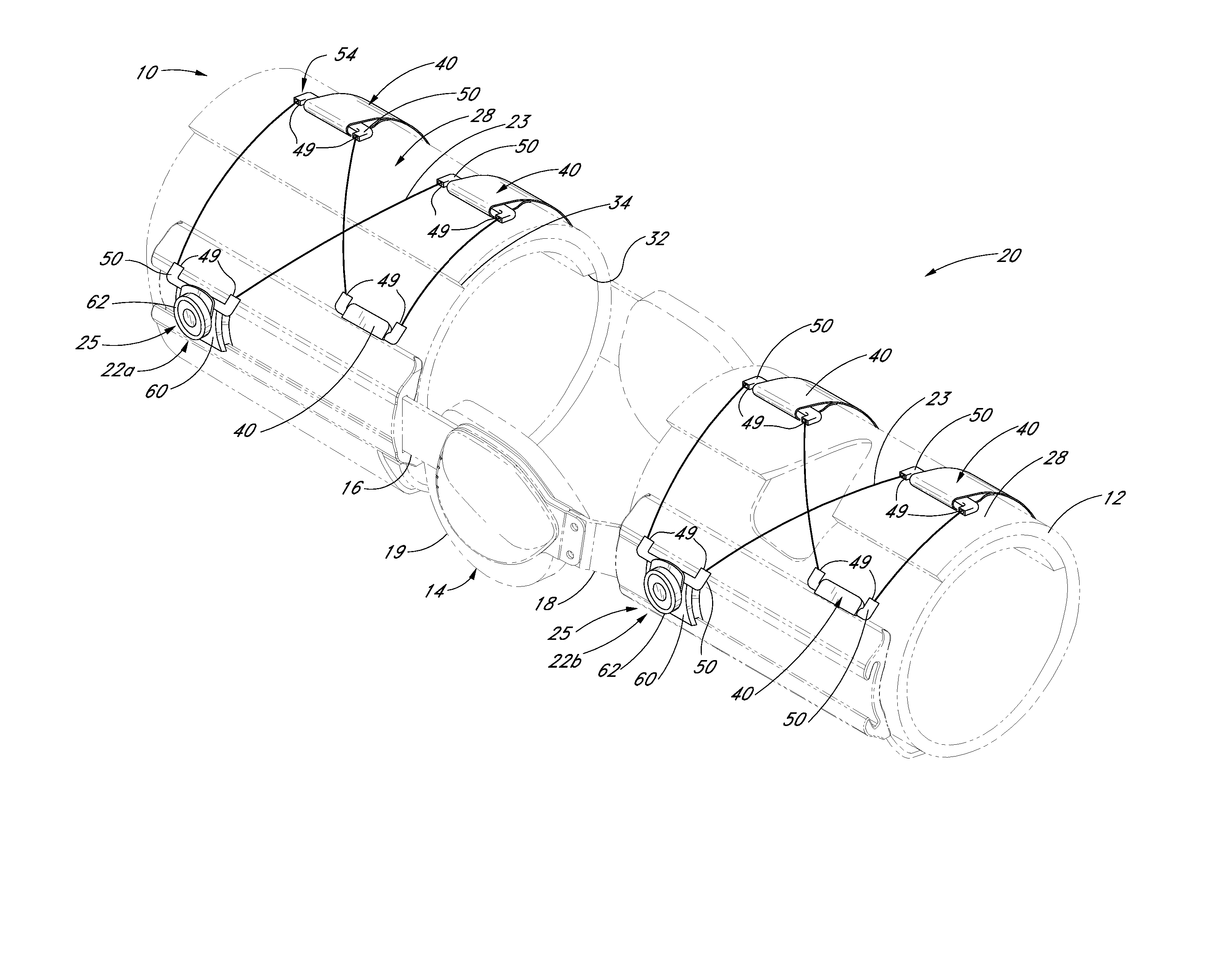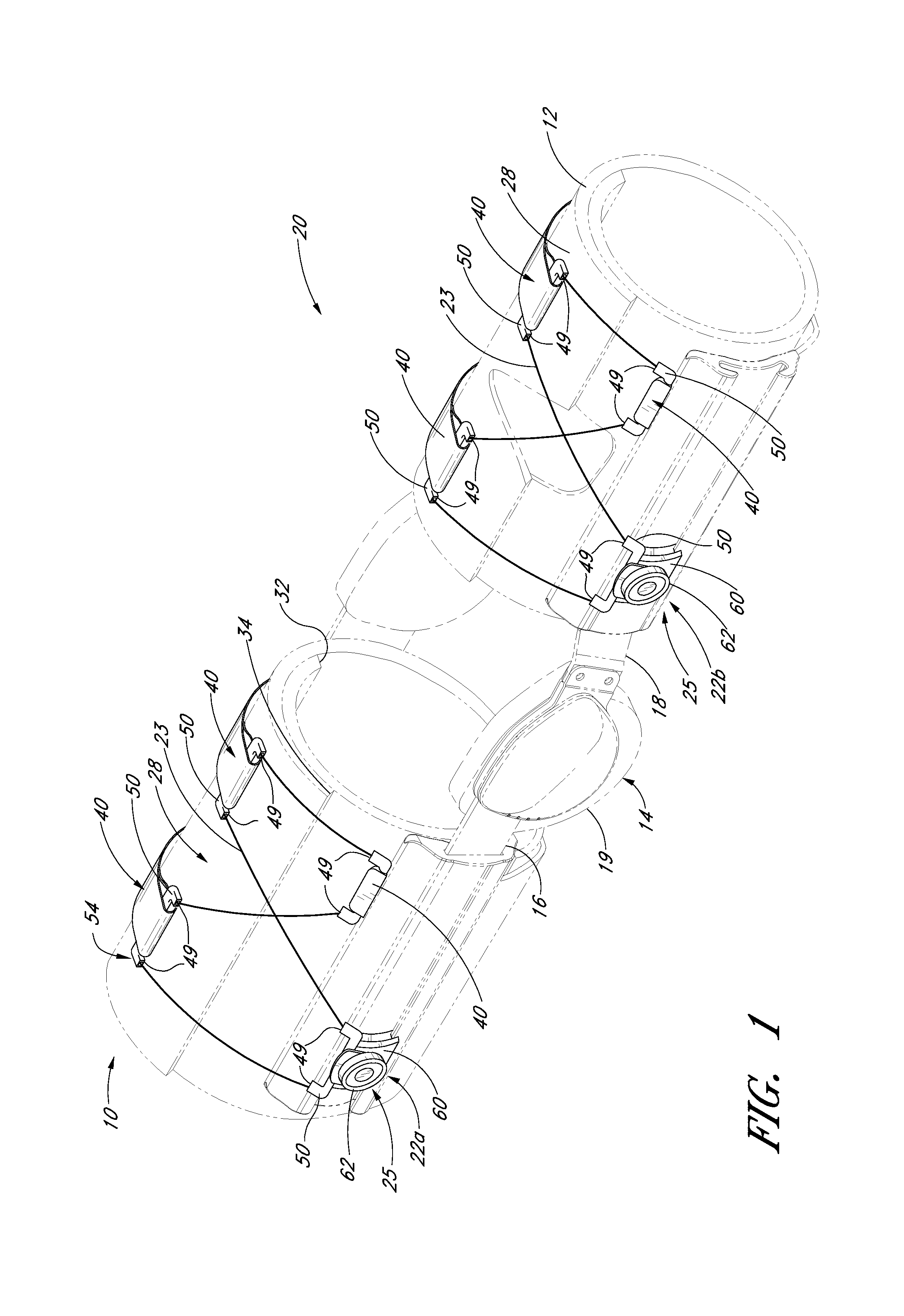Closure System For Braces, Protective Wear And Similar Articles
a technology of braces and closures, applied in the direction of shoe lace fastenings, nuclear engineering, nuclear elements, etc., can solve the problems of bulky fittings used to couple straps, discomfort and restriction of circulation, shift of orthopedic braces, etc., and achieve the effect of facilitating opening and closing and low friction interfa
- Summary
- Abstract
- Description
- Claims
- Application Information
AI Technical Summary
Benefits of technology
Problems solved by technology
Method used
Image
Examples
Embodiment Construction
[0035] Referring to FIG. 1, one embodiment of an orthopedic brace 20 prepared in accordance with the present inventions is disclosed. The orthopedic brace 20 generally comprises a knee brace that is tightened around a wearer's leg using a lacing configuration comprising two lacing systems 22a, 22b, such that the knee brace substantially surrounds and protects the wearer's knee. The orthopedic brace of the illustrated embodiment is particularly concerned with relieving and / or supporting the knee joint.
[0036] Generally speaking, some knee braces function to counteract anterior shifting of the tibia when the anterior cruciate ligament is missing or damaged. Such anterior shifting of the tibia may occur for a variety of reasons and often happens when a person engages in physical activities that involve sudden turning to the right or to the left, sudden stopping, sudden jumping, running backwards or other types of movements. Where the anterior cruciate ligament is missing or damaged, su...
PUM
 Login to View More
Login to View More Abstract
Description
Claims
Application Information
 Login to View More
Login to View More - R&D
- Intellectual Property
- Life Sciences
- Materials
- Tech Scout
- Unparalleled Data Quality
- Higher Quality Content
- 60% Fewer Hallucinations
Browse by: Latest US Patents, China's latest patents, Technical Efficacy Thesaurus, Application Domain, Technology Topic, Popular Technical Reports.
© 2025 PatSnap. All rights reserved.Legal|Privacy policy|Modern Slavery Act Transparency Statement|Sitemap|About US| Contact US: help@patsnap.com



